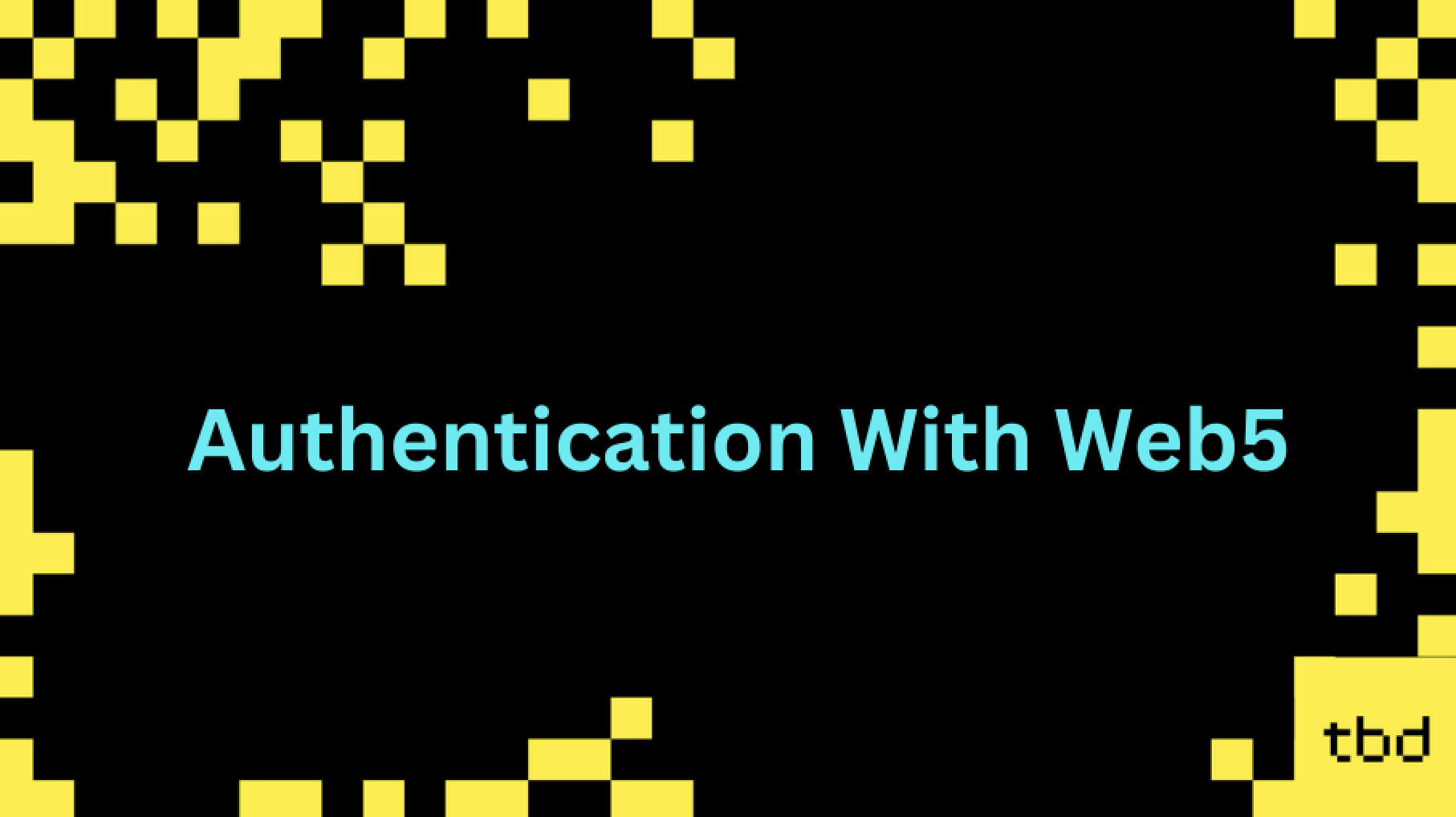
With the emergence of Web5 comes the exciting possibilities for individuals seeking more control over their online identities, data and content. With Web5, traditional authentication methods are no longer the sole means of verifying identity and ownership. Instead, users can leverage Decentralized Identifiers (DIDs) to establish their digital presence while retaining full control over their data. Let's explore how this revolutionizes authentication and content ownership as we know it.
Decentralized Identifiers, or DIDs, lie at the heart of Web5's identity management. DIDs provide individuals with unique and globally resolvable identifiers that are persistent and always under their control. By using a DID, users establish their online presence, similar to a username. This paradigm shift empowers individuals to manage and control their personal information, granting them the freedom to partake in various online platforms all while owning the content and data they share.
Web5 applications eliminate the need for centralized authorities to authenticate us through methods such as two-factor authentication or username/password combinations. Instead, DIDs, alongside data associated with DIDs like Verifiable Credentials, become the foundation of trust. When users interact with Web5 applications, they present claims associated with their DIDs as proof of identity. These applications can verify the authenticity of the user's attestations without the need for traditional username/password authentication.
How It Works
Let's delve into the technical aspects of this. When you acquire a DID, it comes with a public-private key pair. Your DID can be resolved by anyone into a DID document, containing your public key, similar to a username that can be copied and pasted into a login screen.
However, to prove that you are the rightful owner of the DID and it is indeed you logging in, your private key becomes crucial. Your private key should never be shared, and it allows you to generate a digital signature. Whenever you author a message, it automatically carries a digital signature. To verify the same message, it requires the public key. For example, when logging into example.com, sending a message and successfully authenticating it, the online platform will utilize your public key for verification. If the verification process is successful, they can confirm that you are the rightful owner of the given DID, without ever needing your private key.
With Web5 authentication, you can effortlessly create an account, free from the hassle of coming up with a new handle or hoping your existing usernames are available. Instead, you can embrace the simplicity of using your DID. Your DID becomes a personalized "username" that you can use to log into any supporting app's login screen.
Your DID serves as a URI (Unique Resource Identifier) that leads to your DID document, acting as a special hub providing a glimpse into your digital identity. Within your DID document, the application utilizes the URIs as guideposts, leading them to your DWNs (Decentralized Web Nodes) which store your content and data.
This user-friendly approach relieves you from the burdens of creating new content or manually downloading from one platform to upload on another. All the content to which you have granted the application access to will be readily available for the application to read/write to, simply by logging in with your DID.
Benefits of Authentication with Web5
One of the biggest benefits of this is the shift in content ownership. In traditional web applications, content is often stored on centralized servers, placing it under the control of the service provider you've created an account with or you're logged into. However, in Web5, individuals maintain ownership and control over their content. When users create and publish content within a Web5 application, their DIDs are linked to that content, establishing a clear link between the creator and their work. The user's content is stored in their own datastore, a DWN, as opposed to stored on the platform they’ve logged into. This ownership grants users greater autonomy and enables them to decide how their content is shared, used, and monetized.
Another benefit is the enhanced security this type of content ownership and authentication provides. With traditional web applications, data breaches and unauthorized access are a common problem that pose a significant risk to the user and the company that holds this data. In Web5, the distributed nature of the infrastructure gives the users full ownership over their data/content that is stored and protected in their DWN. By reducing the reliance on centralized servers, where multiple people have access to a user’s data the impact of potential security breaches is lower. Empowering users to have more confidence in their online interactions.
Web5 represents a significant leap forward in the evolution of the web, redefining its landscape as we know it. If you're eager to delve into the world of Web5, our documentation serves as an excellent starting point. For those seeking to contribute, we invite you to explore our contributing guide or head on over and checkout our projects in GitHub. We warmly welcome you to join our Discord community and embark on this exciting journey with us.